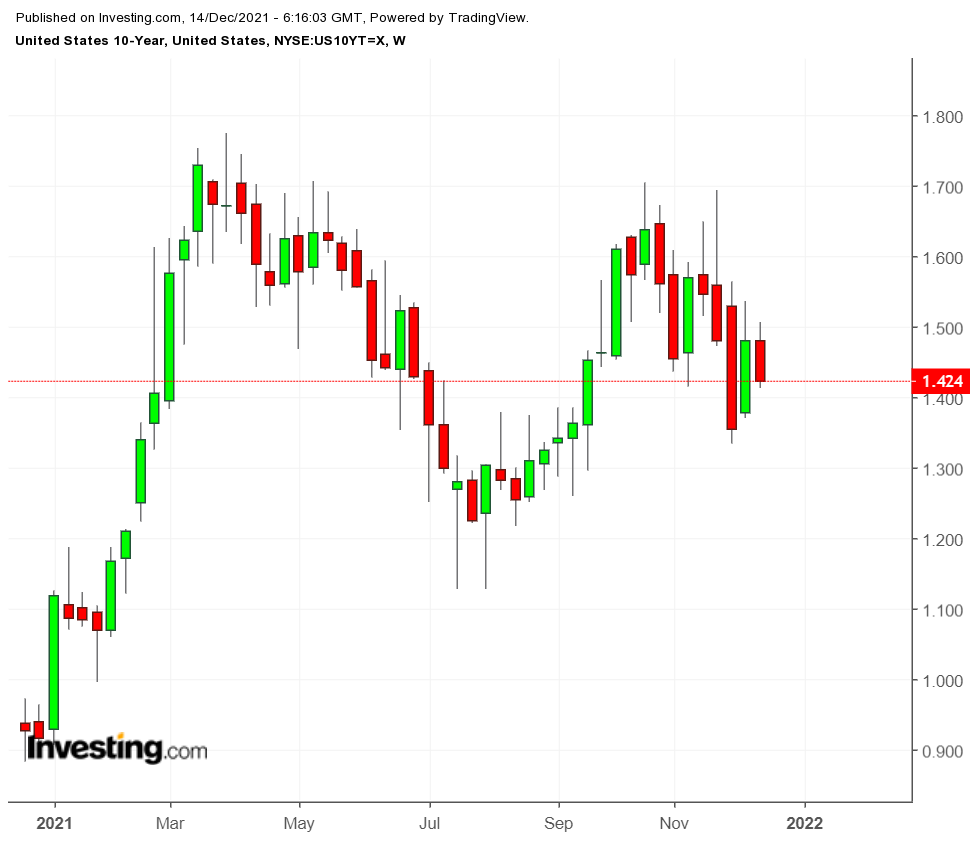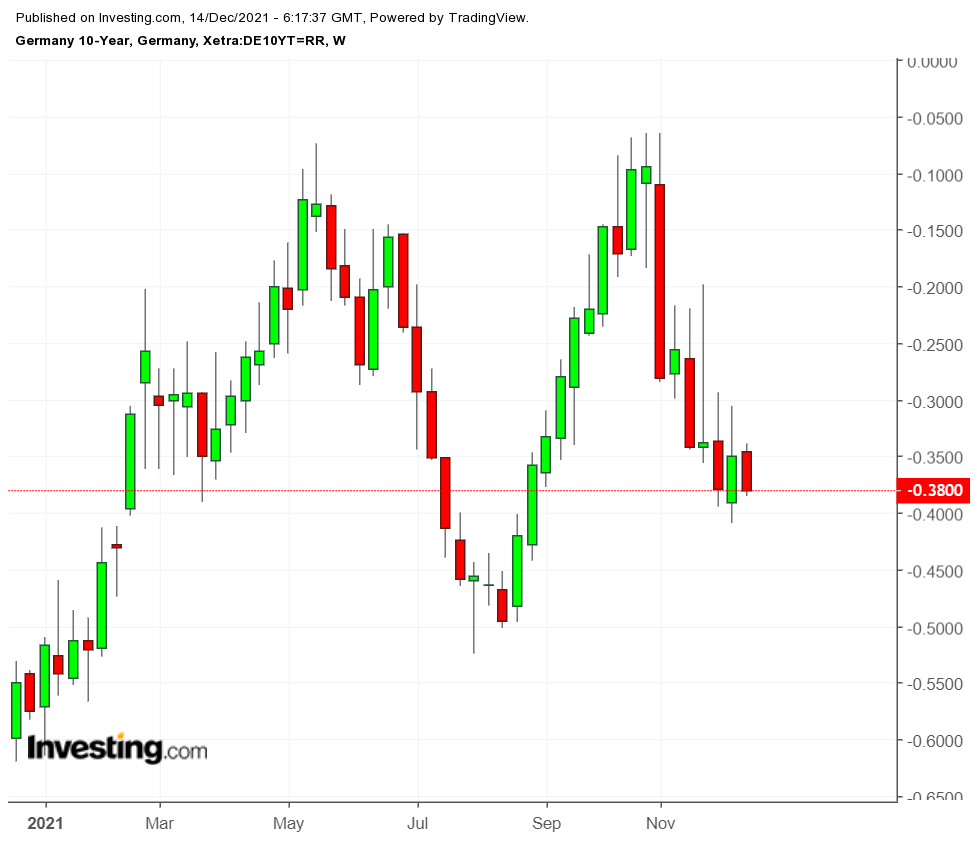There are people who listen to Boris Johnson as if he was someone to take seriously. Some of them even write commentary on the bond market.
So when the British prime minister said Sunday there is a “tidal wave” of COVID-19 infections on the way because of the Omicron variant, his remarks were cited as a reason for yield on the 10-year US Treasury note to give up more than 7 basis points on Monday, nearing 1.41% in late trading.

Johnson may be right, but his record on COVID predictions has been spotty. Remember it was Johnson who relied on deeply flawed projections by British professor Neil Ferguson to start the UK’s draconian lockdowns last year (in fact, many countries relied on these badly mistaken calculations).
The UK prime minister has been erratic in his policies and his own observance of those policies, so his warning should be seen in that light.
Treasuries Await Fed But Added Global Market Volatility Expected
Treasury yields are most likely reacting to this week’s meeting of Federal Reserve policymakers as investors batten down the hatches ahead of the widely expected announcement that the US central bank will accelerate tapering of its bond purchases and get more hawkish in interest-rate forecasts.
Inflation is vying with COVID as the main concern for investors, though of course they are related as the ongoing pandemic exacerbates labor and supply shortages and inflation.
There is a school of thought—propagated by JPMorgan among others—that the Omicron variant is good news because even though it looks like it's more transmissible, its symptoms appear to be less severe and it could mean mutation is diluting the coronavirus impact. Investors seem to agree as stocks notched a new record high last week.
A Reuters poll out last week found that most fixed-income experts expect volatility in sovereign bond markets to continue, with a rising trend in yields due to inflationary pressures. Uncertainty about COVID and its economic impact will contribute to volatility, respondents said.
A separate poll forecast yields on the 10-year Treasury note rising to 1.75%, then 1.90%, and topping 2% over the next several quarters. At present, that yield oscillates around 1.5%.
In Europe, policy meetings this week at the European Central Bank and the Bank of England also have investors staying put.

Yield on the German 10-year bond was trending downwards on Monday, though still short of the minus 0.4% hit last week.
Uncertainty about the impact of Omicron could prompt the ECB governing council to postpone a decision on ending its emergency bond purchases until the February policy meeting. The program is scheduled to end Mar. 31 and ECB President Christine Lagarde has said it will end then, but the COVID variant injects a new factor.
Britain has imposed new COVID restrictions, which casts doubt on the chances of an interest-rate hike this week by the Bank of England’s Monetary Policy Council. The central bank had been expected to raise rates, after it pulled back from doing so at its early November policy meeting.
